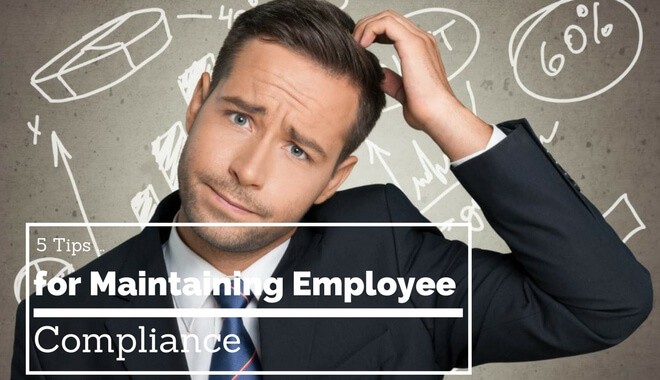According to employers that were audited by the Fair Work Ombudsman in 2016-2017, a whopping 47% of employers’ workplaces were non-compliant. The most common areas of non-compliance in the workplace were found to be wage entitlements, employee payments, and legalities regarding employment termination.
There are serious penalties for non-compliance in these areas and beyond, which is why employers must ensure compliance in the workplace. This means being thorough with internal workplace audits, providing compliance training for employees, and more.
Here are some helpful tips to maintain employee compliance successfully:
- Audit Workplace Policies and Procedures
Always communicate with your employees effectively to ensure they possess a comprehensive understanding of the workplace’s policies and procedures. They must also be knowledgeable about their legal obligations and entitlements. It’s important to audit those policies and procedures regularly, ensuring that they align with the appropriate laws.
- Understand Your Obligations and Responsibilities
As an employer, you are responsible for your customers, contractors, and employees’ health and safety. Because of that, you must have a thorough understanding of your obligations and responsibilities as an employer. This includes (but isn’t limited) to the following:
- Assess the workplace health and safety risks and put measures in place to address and control them.
- Provide and maintain safe equipment, machinery, materials, and tools for employees to use.
- Ensure the workplace is well-maintained, including the ventilation, heating, cooling, and workplace layout.
- Provide adequate compliance training from True Office Learning (or other platforms) and education for employees to understand workplace obligations to the health and safety of the employees.
- Invest in Workplace Safety Management Systems
It’s best to invest in workplace management safety systems and gain appropriate safety accreditations with training relevant to your industries. If you are in a higher-risk industry, you may need to invest in specific systems.
You may also utilize the training from accreditations to reduce the risk of serious injuries and fatalities in the workplace. Moreover, it will ensure compliance in audits to prevent serious penalties. Lastly, it will promote a more positive workplace culture and show further commitment to your employees and stakeholders.
- Don’t Just Tick the Box
Many employers and employees see compliance as merely ticking a box on their checklist. However, this shouldn’t be the case!
You want to create a positive work environment and show you value employees by encouraging a more positive approach to compliance training. Workplace compliance requirements and logistics may seem tedious and “boring,” but these are very serious topics and more serious consequences if you don’t adhere to the rules and regulations.
That’s why it’s important to create a space where your employees can talk about any issues that arise. Moreover, you must also foster an environment where employees are more open to training and development, which can help you and the business in the long run. You may seek professional guidance for further help in this section.
Wrapping It Up
Follow these tips to start maintaining employee compliance for your company’s success.


Comments are closed.